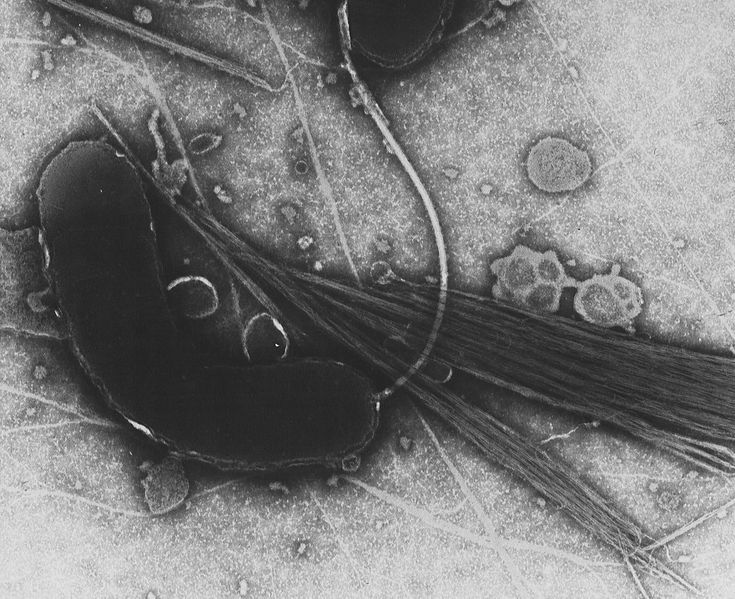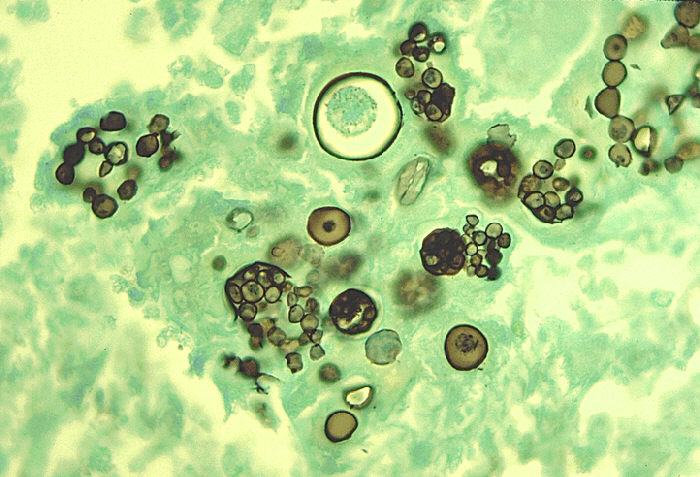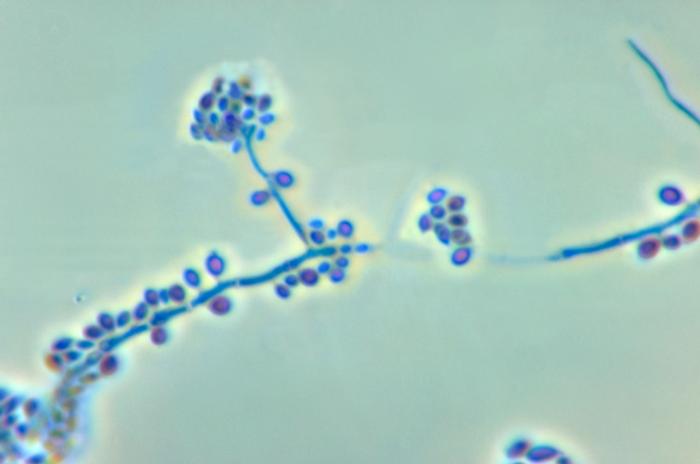Vibrio is a genus of curved, comma-shaped, non-encapsulated, gram- negative facultative rods with shooting-star motility. Vibrio cholerae is responsible for causing cholera.

Vibrio cholerae
Pathogenesis
Route of entry
• Fecal contamination of water and food
• Animal reservoirs are shrimps and oysters
• Carriers are usually asymptomatic
Somatic antigen and flagella antigen are present. A large number of bacteria, i.e. 1 billion, are required for colonization as are sensitive to hydrochloric acid in stomach. Pathogenesis depends on colonization of the small intestine by the organism and secretion of enterotoxin.
• Vibrio attaches to the cells of the brush border of the gut, with aid of bacterial enzyme, mucinase.
• Mucinase dissolves the protective glycoprotein coating over the intestinal cells.
• After attachment, the bacteria multiply and secrete enterotoxin, choleragen. Choleragen consist of 2 subunits, ‘A’ inserted into cytosol and ‘B’ binds ganglioside receptor on the surface of the enterocytes.
• ‘A’ submit catalyses the addition of ADP- ribose to the G protein, thus stimulating G protein.
• Pili
• Enterotoxin
• Mucinase
Predisposing factors
• Over crowded place
• Undercooked seafood
• Poor hygiene
• Lake of clean drinking water
• Malnutrition
• Inadequate medical services
Lab Diagnosis
Specimen
For stool culture, blair or transport medium should be used.
Microscopy
Important microscopic features include:
• Curved, comma-shaped
• Gram- negative rods
• Shooting-star motility
• Non-encapsulated
• Facultative

Culture
• Non-halophilic, like low concentration of Na+ ions.
• Alkaline peptone water, turbidity on and just below the surface of the medium appears, within 4-6 hours.
• Thiosulphate-citrate bile salt sucrose (TCBS) agar, yellow colonies are formed.
• MacConkey agar, most strains are able to grow, giving cloudless colonies.
• Blood agar, beta-hemolytic colonies are formed.
Biochemical Tests
Triple sugar iron (TSI) agar
Acidic slant and acidic butt is produced. No gas or H2S is formed.
• Oxidase Positive
• Catalase Positive
• Ferments Sucrose, Glucose, Mannitol
• Urease Negative
• B. Galactosidase Positive
• Lactose Not fermented in 24 hours
• Indole Test Positive
• Lysine decarboxylase Positive
Serological Tests
• Rapid dipstick test
• PCR
Clinical symptoms of Cholera
• Rice water stools, containing
- Mucous
- Epitheloid cells
- Large number of vibrios
• Severe dehydration
• Acidosis
• Hypokalemia
• Vomiting
• Restlessness
• Sunken eyes
• Dry mucus membrane
• Loss of skin elasticity
Vibrio Parahaemolyticus
Vibrio parahaemolyticus is a marine organism transmitted by ingestion of undercooked seafood. It has unknown pathogenesis, but enterotoxin is similar to choleragen. It is also halophilic.
Clinical symptoms
- Mild to severe watery diarrhea
- Nausea
- Vomiting
- Abdominal cramps
- Fever
Biochemical tests are similar to V. cholera, except it does not ferment sucrose.
Vibrio vulnificus
Vibrio vulnificus is a marine organism, found in warm salt waters. It causes cellulities, especially in shellfish handlers. It causes rapid fatal septicemia in immune-compromised people eating raw fish containing the organism.
It produces hemorrhagic bullae on the skin as well. Chronic liver disease is a predisposing factor.
Doxycycline is given for treatment.
 howMed Know Yourself
howMed Know Yourself





